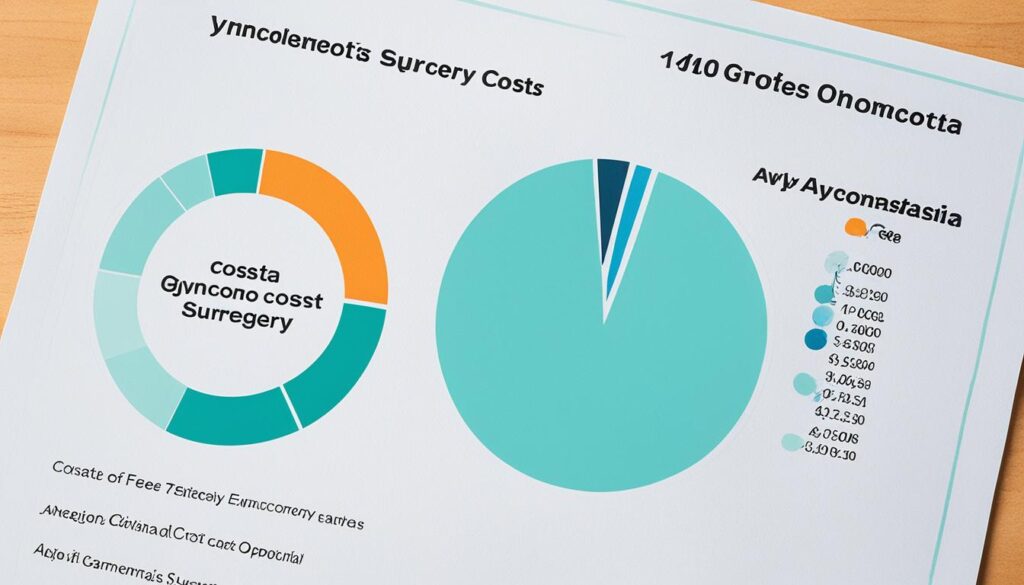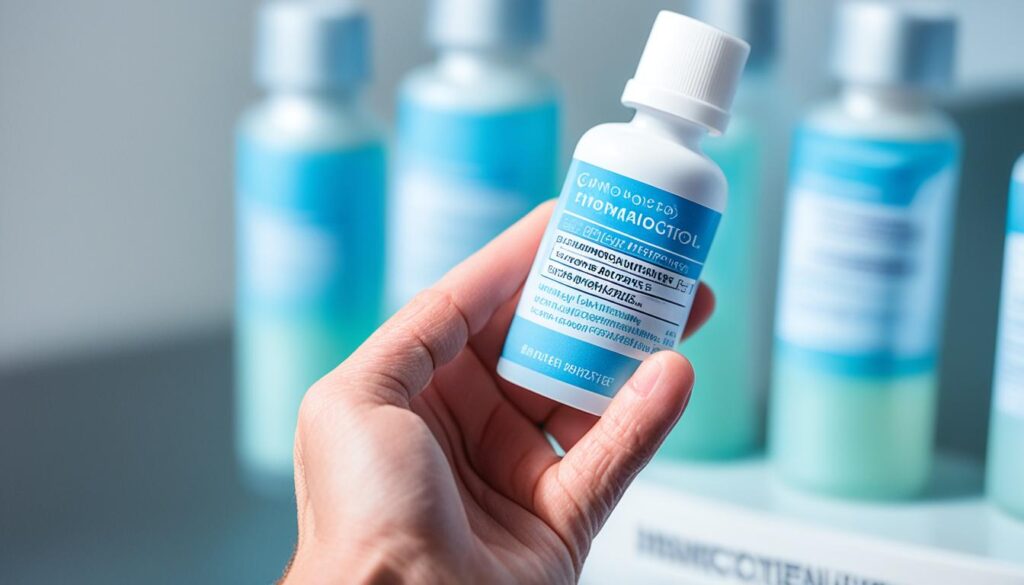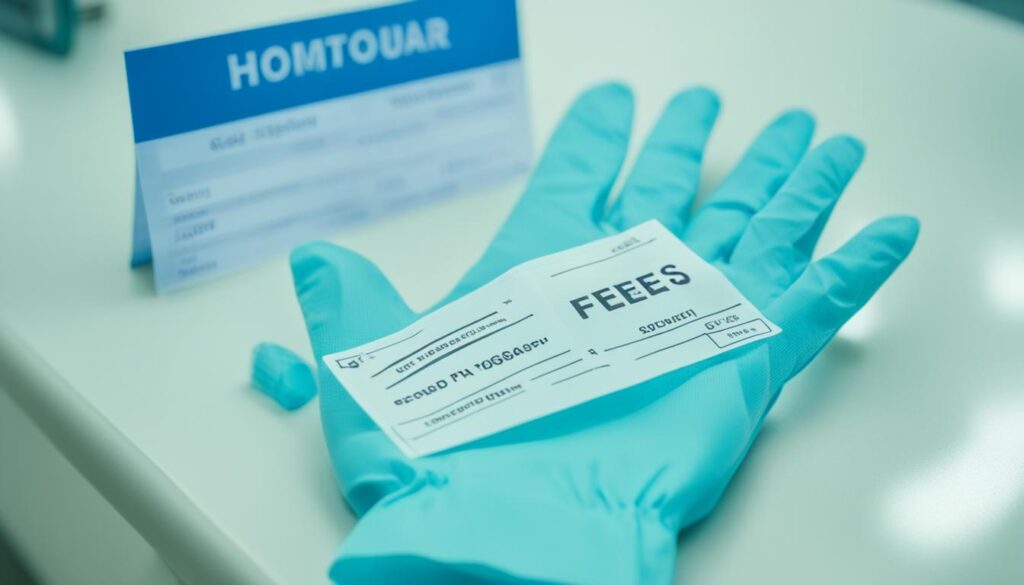Unlock the steps to secure insurance coverage for your gynecomastia surgery. Explore options and navigate claims with our expert guide on how to get gynecomastia surgery covered by insurance.
For many, getting rid of overgrown breasts is more than just a surgery. It’s a step towards feeling better about oneself and living life fully. But, the cost of this surgery can be a big worry. It usually costs between $5,000 and $10,000. Yet, if you have a serious case, some insurance might help pay for it.
Knowing what insurance might cover and looking into costs and financing can help. This way, you can better understand your options in the complex world of insurance.
Key Takeaways
- Insurers may cover gynecomastia surgery if firmly diagnosed with glandular tissue and not solely fatty accumulation.
- Medical necessity plays a pivotal role in influencing insurance coverage for gynecomastia surgery.
- The average cost of surgery in the United States can be hefty, emphasizing the need for insurance or alternative financial plans.
- Financing options, such as CareCredit, are often pursued due to limited insurance options for gynecomastia surgery.
- Patients are encouraged to secure a medical necessity documentation from healthcare providers to aid in insurance claims.
- The age at which the surgery is sought can affect both the permanence of results and insurance coverage availability.
- Understanding the components influencing the cost of surgery is crucial in planning and discussing payment options.
Understanding Gynecomastia and Surgical Treatment
Gynecomastia is when men have bigger breast tissue. It happens due to hormonal changes, some medicines, or health issues. Male breast reduction surgery helps with both the physical and emotional effects.
Getting insurance coverage for gynecomastia surgery depends on how bad it is and how it affects you. If it causes a lot of pain or distress, you might get insurance to cover it. But, remember, most cosmetic surgeries aren’t covered unless really needed.
The surgery for gynecomastia removes extra fatty and glandular tissue. It aims to make the chest look better and improve how you feel about it.
Here are important things to think about if you’re thinking about male breast reduction surgery:
- Check if your gynecomastia can be fixed with other treatments, like changing medicines or fixing hormonal issues.
- Not all surgeries get insurance coverage. But, if it really affects you physically or mentally, you might get coverage for insurance coverage for gynecomastia surgery.
- Talking to a specialist is key to see how bad your gynecomastia is and what treatment options you have.
Deciding on surgery is complex. You should think about the costs and what’s covered by insurance. Calling your insurance to ask about gynecomastia surgery coverage can help you understand what you might pay out-of-pocket.
What Does Gynecomastia Surgery Typically Cost?
Understanding the costs of gynecomastia surgery is key for those thinking about it. The price can change a lot because of different factors. It’s smart for patients to look into getting insurance to pay for gynecomastia surgery.
Gauging the Average Price Range
The cost of gynecomastia surgery is usually between $6,000 to $9,000. This includes things like anesthesia fees, the cost of the surgery center, and the surgeon’s fees. Prices vary because of where you live and the surgery you need.
Factors Influencing the Total Expense of the Procedure
What makes the cost go up includes the surgeon’s skills, how complex the surgery is, and where the surgery is done. Prices are often higher in big cities because of higher costs. You might also have to pay extra for things like special clothes after surgery and follow-up visits. These costs might not be covered by insurance.
| Cost Component | Typical Expense |
|---|---|
| Anesthesia Fees | $1,000 – $2,000 |
| Surgeon’s Fees | $4,000 – $5,000 |
| Surgical Facility Costs | $1,500 – $3,000 |
| Additional Costs (Garments, Meds) | $500 – $800 |
If you’re looking into gynecomastia surgery and insurance claims, remember insurance might not cover it. Insurance usually sees the surgery as cosmetic unless it’s needed for health reasons. You’ll need to document well and keep pushing for insurance approval.

Talk to your surgeon and insurance company to see if you might get coverage. Knowing what you might have to pay helps you plan and understand the big changes this surgery can bring.
Analyzing the Cost Components of Gynecomastia Surgery
Understanding the costs of gynecomastia surgery is key to controlling costs and planning well. The total cost depends on the surgeon’s skills and the surgery’s complexity. By looking at these costs, patients can better understand the price and get gynecomastia surgery insurance approval.
The surgeon’s fee is a big part of the cost. It changes a lot based on their experience and where the clinic is. Other big costs are anesthesia, the operating room, and tests before or after surgery. Let’s look at the usual costs for each part:
| Cost Component | Typical Cost Range |
|---|---|
| Surgeon’s Fee | $3,000 – $4,000 |
| Anesthesia | $500 – $1,000 |
| Operating Room Fees | $700 – $1,200 |
| Post-Surgery Garments | $50 – $150 |
| Prescription Medications | $20 – $50 |
| Medical Tests | $100 – $500 |
The costs of pricing for surgical services can add up fast. So, potential patients should think about all the costs. This includes the surgery itself, travel, time off work, and follow-up care. These costs can really affect how much you pay overall.
To keep costs down, patients should compare prices and find surgeons with clear prices. This helps in controlling costs. Also, talking about payment options and getting gynecomastia surgery insurance approval early can make things easier. This can help reduce financial stress and make the surgery smoother.
Strategies for Managing Out-of-Pocket Gynecomastia Surgery Expenses
Gynecomastia surgery costs can be high, from $4,000 to $10,000. It’s important to plan and look for ways to lower costs. Even though it’s often seen as cosmetic, there are ways to make it more affordable.
Price Shopping for Surgical Services
Shopping around for prices is a key way to cut costs. Tools let you compare prices easily. Hospitals must show their prices, helping you make smart choices.
Getting detailed estimates from providers is a good step. These show all costs, from the surgeon to the hospital. This helps you pick the best option and negotiate better deals.
Exploring Payment Plans and Financing Options
Since insurance doesn’t usually cover gynecomastia surgery, looking at payment plans is key. Many places offer plans to spread out the cost. Credit services like CareCredit can also help, with low-interest offers.
Healthcare savings accounts (HSAs) or flexible spending accounts (FSAs) can also help cover costs. Discount programs like GoodRx coupons can lower the cost of medicines after surgery. Knowing about all these options can make things easier financially.

Planning carefully can make the cost of gynecomastia surgery easier to handle. Using price comparisons, payment plans, and discounts can help. This way, you can manage your costs better and feel more confident about your decision.
How to Get Gynecomastia Surgery Covered by Insurance
Getting insurance to cover gynecomastia surgery is complex because of certain rules. It’s key to know these rules to see if your surgery will be covered. Here’s a simple way to get coverage and what steps you need to take:
Talk to doctors who know a lot about gynecomastia. They can help show why you need surgery. You’ll need to provide proof that the surgery is needed, like not responding to other treatments. Sometimes, you’ll need tests like mammograms or MRI scans to check for cancer. If you’re feeling really down, you might need to see a psychiatrist to support your surgery claim.
Look closely at your insurance policy to know what’s covered for health reasons versus what’s not. If your surgery is for medical reasons, like pain or affecting your daily life, it might be covered. Here’s a table that shows some common insurance rules and how they might affect your case:
| Requirement | Details |
|---|---|
| Preoperative Tests | Mammogram, MRI to exclude malignant causes |
| Psychological Evaluation | Needed to assess psychological impact and establish medical necessity |
| Liposuction Coverage | Generally not covered as a standalone treatment; combined approaches may be partially covered |
| Criteria for Coverage Assertion | Failure of non-surgical treatments, documented medical interference, and pain |
| Procedure Types Covered | Varies by plan; somatic symptoms like tenderness often required |
Working together with your doctors, healthcare team, and insurance company is key. This team can help put together a strong case for why you need the surgery. It’s important to keep talking as the process can take a while.
Finally, be ready to speak up for your health. Sometimes, even if you meet all the requirements, you might need to keep asking for approval. The aim is to make sure your surgery is seen as a health need, not just for looks.
Navigating Insurance Coverage Criteria for Gynecomastia Surgery
Getting gynecomastia surgery covered by insurance starts with knowing what your insurance policy says. Most policies don’t cover it unless it’s really needed for health or mental health reasons. This decision is based on how much the condition affects your life.

The American Society of Plastic Surgeons helps doctors figure out if surgery is needed. It’s important for patients and doctors to show a strong reason for surgery. This is especially true if other treatments didn’t work or if symptoms are bad.
Understanding Policy Requirements
First, look at your insurance policy to see what it says about covering gynecomastia surgery. Insurers usually see it as cosmetic unless it’s really needed for health reasons. If it’s seen as necessary, check if you need to get approval before starting.
Tips for Submitting Insurance Claims
Getting your insurance to cover gynecomastia surgery takes careful planning. Here are some tips:
- Gather Comprehensive Documentation: Collect all your medical records, doctor’s notes, and test results that show why you need surgery.
- Pre-Submit for Authorization: Many insurers want you to get approval before. Make sure you do this to know if you’ll be covered.
- Detail the Medical Need: Your claim should explain why you need surgery for health reasons, not just looks.
- Understand the Appeal Process: Know how to appeal if your claim is denied. This is important for your next steps.
Getting insurance to cover gynecomastia surgery can be hard. But, if you know how to submit your claim well, you might get coverage.
Comparing Gynecomastia Surgery Insurance Options Across Providers
Looking at gynecomastia surgery insurance options, we see a lot of differences among insurance providers. This is because of the many policy variations. It’s important to look closely at what each insurer offers and when they say the surgery is needed or not.
Some conditions, like Klinefelter syndrome, make gynecomastia more likely. This might lead insurers to cover mastectomy. But, they often don’t cover liposuction because it’s seen as not proven yet.
Here are some key things to think about when looking at insurance for gynecomastia surgery:
- Medically Necessary Conditions: Most policies want proof that gynecomastia has lasted over two years or is linked to hormonal issues.
- Procedure Coverage: Mastectomy or reduction mammoplasty gets covered more often than liposuction alone.
- Reconstructive vs. Cosmetic: If the surgery is seen as reconstructive, like for severe gynecomastia, it might be covered more easily. Cosmetic changes are harder to get covered.
Talking with your healthcare team is key to understanding insurance claims. Knowing what your policy says can really help with getting insurance to pay and getting financial help.
Here’s a table showing what different providers cover and what they don’t:
| Provider | Covered Procedures | Criteria for Coverage | Exceptions |
|---|---|---|---|
| Provider A | Mastectomy, Reduction Mammoplasty | Persistent symptoms over 2 years, hormonal causes documented | Liposuction |
| Provider B | Mastectomy for Grades III & IV | Grade III or IV gynecomastia, evidence of unsuccessful medical treatment | Cosmetic procedures |
It’s important to really look at your policy and talk with your surgeon and insurance people. This way, you can understand the gynecomastia surgery insurance options you have. It helps you get the treatment you need with the best insurance support.
Immediate Steps to Secure Insurance Approval for Gynecomastia Surgery
Getting insurance to cover gynecomastia surgery needs a careful plan. It’s complex because insurance rules for this surgery are strict. You must show the surgery is needed for health reasons, not just for looks.

First, check if your case fits the insurance’s criteria. Make sure the surgery is seen as reconstructive, not cosmetic. You’ll need to show medical records that prove you need the surgery for health reasons.
- Consult with a Board-certified Surgeon: Talk to a plastic surgeon who knows about insurance coverage for gynecomastia surgery. They can help with the paperwork and explain why you need the surgery.
- Review Your Insurance Policy: Look over your insurance plan or talk to a rep to see what’s covered and what’s not. Check for any rules about gynecomastia surgery.
- Gather Appropriate Documentation: Collect all your medical records and any other papers that show how gynecomastia affects your life. These are key for your insurance claim.
- Prepare a Detailed Medical Letter: Get your surgeon to write a letter explaining why you need surgery. Include your medical history and why surgery is the best option.
- Submit Your Claim: Send in your insurance claim with all your papers. Make sure to follow up and be ready to appeal if they say no at first.
By taking these steps and getting ready well, you can boost your chances of securing insurance approval for gynecomastia surgery. Being aware and prepared helps you deal with this tricky process.
Insurance Alternatives: Utilizing Health Savings Accounts and Discounts
For those looking into gynecomastia surgery without insurance, the costs can seem high. Knowing about health savings accounts (HSAs) and gynecomastia surgery discounts is key to saving money.
HSAs let you put money aside before taxes. Both employers and employees can add to it. You can use this money for medical costs, including gynecomastia surgery if it’s needed for health reasons.

Talking to your doctor about payment can lead to discounts. You might get a lower price if you pay upfront or choose a special rate. Some surgeries for birth defects or injuries can be covered by HSAs. Looking for discounts on gynecomastia surgery can also help reduce costs.
| Expense Category | Eligibility for HSA | Common Discounts Offered |
|---|---|---|
| Gynecomastia Surgery | Yes, if deemed medically necessary | Discounts for upfront payment, Medically necessary rate reductions |
| Anesthesia Fees | Yes | Varies, occasionally bundled with surgery discount |
| Hospital Stay | Yes | Negotiable depending on the hospital |
| Medications | Yes | Discounts through pharmacy programs or bulk buying |
Using health savings accounts and looking for discounts can make gynecomastia surgery more affordable. Always check with your healthcare provider about HSA rules and limits.
Seeking Alternatives to Surgery: Non-Surgical Gynecomastia Treatments
For those looking for gynecomastia treatments without surgery, there are options. These methods are safer and can ease symptoms without surgery.
Medications and Hormone Therapies
Hormone therapy is key for non-surgical treatments. It fixes hormonal imbalances that cause gynecomastia. This helps reduce breast swelling. It’s great for gynecomastia caused by puberty or hormone issues.
Always talk to a doctor before starting hormone therapy. They can make sure it’s right for you and your health.
Fitness and Diet Adjustments
Changing your diet and exercise can help with gynecomastia. These changes focus on losing fat, which can make breasts smaller. Eating lean proteins, veggies, and fruits, and doing strength and cardio exercises helps balance hormones and appearance.
Also, avoid foods and substances that make gynecomastia worse, like alcohol and some medicines.

| Approach | Benefits | Considerations |
|---|---|---|
| Hormone Therapy | Directly targets hormonal imbalance | Requires medical supervision |
| Diet and Exercise | Promotes overall health and targets fat loss | Results may vary; consistency is key |
While surgery is often considered for gynecomastia, there are non-surgical options too. Hormone therapy and diet and exercise can help. These methods are less invasive and focus on health.
Financial Planning for Gynecomastia Surgery Without Insurance Coverage
When you’re looking at gynecomastia surgery costs without insurance, you need to know all the expenses. These costs include the surgeon’s fee, anesthesia, the place where you have surgery, and aftercare like medicines and special clothes. Here are some ways to plan for financial planning for surgery if you don’t have insurance.

- Saving Over Time: Start saving some of your money as soon as you think about surgery. Having a special savings account can help you save up.
- Medical Loans and Personal Loans: There are loans for medical procedures from banks and other lenders. These can help cover the costs and make payments easier.
- Healthcare Facility Financing: Some places where you can have surgery offer their own financing plans. These might be a good choice if they have low-interest rates or flexible payback options.
- Third-party Financing: Companies like CareCredit offer loans and credit plans just for healthcare costs. They sometimes have special deals with no interest for a while.
Talking to several surgeons about gynecomastia surgery costs without insurance is a good idea. They can give you a clear idea of the costs and might offer lower prices based on your income, making it easier to pay.
| Expense Category | Typical Cost | Notes |
|---|---|---|
| Surgeon’s Fees | $4,239 | Most of the cost; depends on the surgeon’s experience and where they are. |
| Anesthesia | Varies | General anesthesia is more expensive than local anesthesia. |
| Facility Fees | Varies | This depends on where you have surgery and the type of facility. |
| Additional Procedures | Varies | Combining procedures can save money. |
| Incidental Costs | Varies | This includes medicines, special clothes, and other things you need after surgery. |
Planning well for financial planning for surgery can make paying for gynecomastia surgery costs without insurance less stressful. By knowing all the costs and looking at different financing options, you can make smart choices about your surgery. This way, you can have surgery without worrying too much about money.
Benefiting from Hospital and Surgeon Price Transparency
Recent rules for surgeon price transparency are changing how patients handle healthcare costs. This includes costs for gynecomastia surgery. Now, hospitals share detailed prices, helping with healthcare cost comparison. This is great for those thinking about male breast reduction surgery. It lets them see prices and make smart money choices.
Knowing the costs of gynecomastia surgery means looking at surgeon fees, anesthesia, and facility costs. Thanks to price transparency, patients can easily find this info. This helps them compare costs and pick services that match their budget and health goals.

Tools like Medicare’s price lookup help those without insurance or paying out-of-pocket. They give cost estimates. This lets patients plan their budgets better. It also helps them negotiate or find programs to help with costs.
| Service | Gross Charge | Discounted Cash Price | Payer Negotiated Rate |
|---|---|---|---|
| Initial Consultation | $250 | $200 | $150 |
| Surgical Procedure | $4,500 | $3,500 | $2,500 |
| Post-Operative Care | $500 | $400 | $300 |
Patients should talk about costs with their healthcare providers. They should ask for estimates and about financial help. Talking openly about costs makes things clear and builds trust. It also helps avoid surprise costs after surgery.
This clear way of sharing healthcare prices meets what people expect today. It makes healthcare easier to understand for everyone. It ensures patients get fair and right treatment.
Understanding the Post-Operative Financial Implications
Gynecomastia surgery can change lives, but it also has costs after the surgery. These costs include doctor visits, medicines, and special clothes for healing. All these are important for a good recovery.
Planning for surgery costs is key to managing expenses. Some surgeons offer packages that include some costs after surgery. Knowing about these costs before surgery helps avoid unexpected costs later.
Planning for costs after surgery is crucial for managing gynecomastia surgery expenses.

| Expense Category | Cost Range | Notes |
|---|---|---|
| Follow-up Consultations | $100 – $500 | Varies by location and duration |
| Prescription Medications | $50 – $300 | Depending on medication type |
| Compression Garments | $30 – $200 | Essential for optimal recovery |
| Unforeseen Expenses | Variable | Potential additional treatments or care needs |
Looking into ways to save on costs can help with post-surgery care. Talking with doctors about costs can also prepare you financially and mentally for recovery.
Knowing what costs to expect helps people have a smoother recovery. It also keeps their finances in good shape after gynecomastia surgery.
Making the Case: Documenting Medical Necessity for Gynecomastia Surgery
To prove you need gynecomastia surgery, you must gather a lot of documents. These documents must meet the strict rules set by insurance companies. They look for patient histories, physical exams, and tests to show the condition won’t go away with other treatments.
Gathering Essential Medical Records and Documentation
Start by collecting important medical records for gynecomastia surgery. These should show how long you’ve had gynecomastia, how it has changed, and what treatments you’ve tried before. Insurance companies check these records closely to make sure surgery is the best choice after other treatments didn’t work. You’ll need to provide:
- Complete history of the medical condition
- Documentation of prescribed medication trials and outcomes
- Reports from imaging studies like ultrasounds or MRIs
- Evidence of pain and functional impairment assessments

Engaging Your Healthcare Provider in the Process
Working with your healthcare provider is crucial to prove you need surgery. They can write letters that explain why surgery is the best choice. These letters are very important. They help show why the surgery is needed and what benefits it will bring.
| Age Group | Medical Necessity Criteria | Documentation Required |
|---|---|---|
| Under 18 | Glandular breast tissue prominence, resistant to medication | Medical history, medication history, imaging reports |
| 18 and over | Similar conditions as younger patients, confirmed by clinical evaluation | Medical history, severity of pain, functional impairment documents |
With careful documentation and support from your doctor, insurance companies and doctors will see surgery as a needed treatment. It’s not just for looks.
Leveraging Social Proof and Community Support in Your Insurance Advocacy
When dealing with insurance for gynecomastia surgery, using community support for surgery and gynecomastia patient advocacy can change things. Being part of a group that understands health and insurance issues helps a lot. It gives you emotional and practical help for fighting with insurance companies.
Getting advice from people who have won against insurance can make your case stronger. This includes appeal letters, stories of success, and advice that can really help you get surgery approved.
- Involvement in specialized online forums and patient groups.
- Access to a repository of shared success stories and effective appeal strategies.
- Connection with individuals who have firsthand experience in dealing with insurance for gynecomastia surgery.
Now, there are more places online that focus on gynecomastia patient advocacy. These sites offer advice that fits your situation. They also work for bigger changes in insurance policies to help people get surgery coverage.

Community support is key for your mental and emotional health when fighting for insurance approval. By sharing their stories, people help and teach each other. This builds a strong way to fight against insurance denials.
Using your own story with facts and legal wins can make your insurance appeal stronger. Being active in community support for surgery groups and using their resources can help you. It makes your case for gynecomastia surgery coverage stronger.
Conclusion
Understanding gynecomastia and its surgery needs a deep look at the condition and the costs. Getting insurance coverage for gynecomastia surgery is complex, with costs from $7,500 to $16,000. This is a big expense for many. You need to do a lot of research and compare prices carefully.
You must gather all your medical records to meet insurance requirements. Insurance companies have different rules. Gynecomastia affects up to 20% of young Americans, showing why insurance rules are important.
Working with doctors is key to getting strong medical proof of your condition. This proof shows why surgery is needed when other treatments don’t work. This can help you get insurance to cover the surgery.
Surgery for gynecomastia has gotten better over time. Now, it’s more effective and less invasive. There are different ways to treat it, like liposuction or surgery. Studies show good results after surgery, making it a good option.
With hard work and careful planning, people with gynecomastia can get the help they need. This can make their lives better financially and personally.

COMMENTS